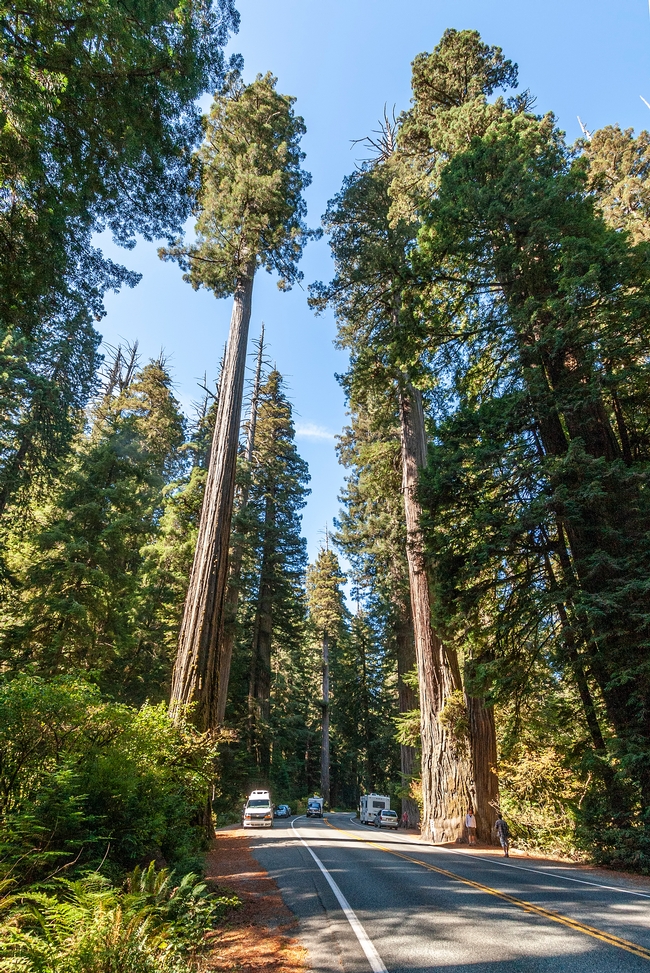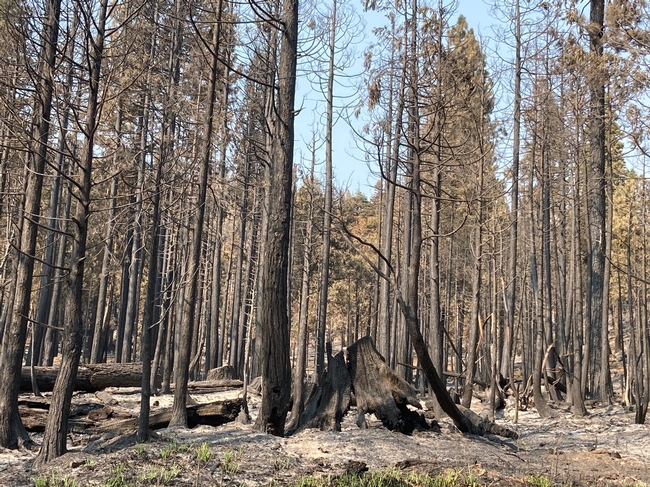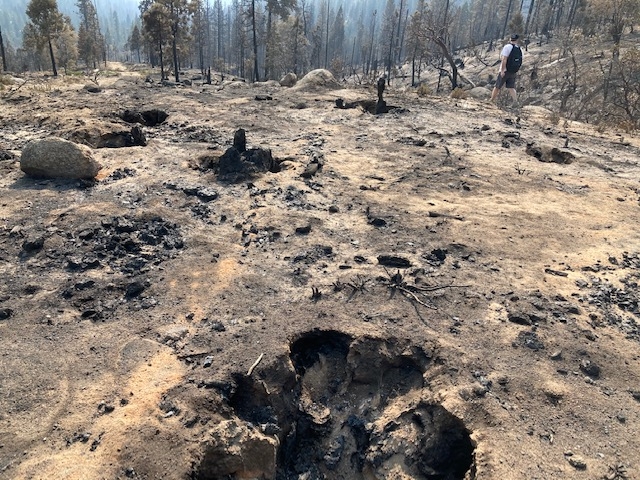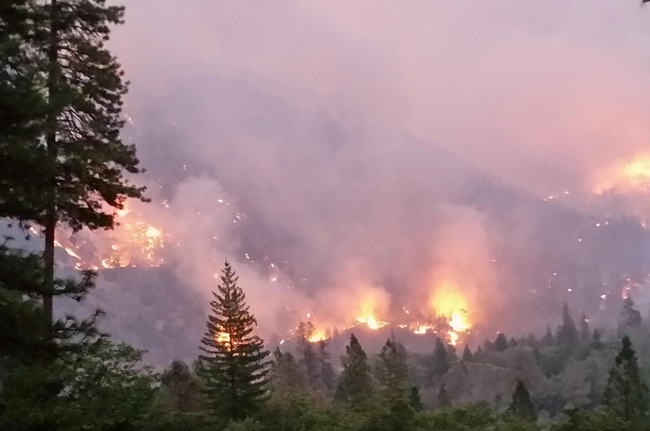
Posts Tagged: Wildfire
Forest management can help giant sequoias and coastal redwoods survive
In 2020, 9,000 fires scorched more than 4 million acres of California, a record-breaking year, reported Alejandra Borunda in National Geographic. Fires burned through homes and oak forests, grasslands and pines — and also through patches of giant sequoias and coast redwoods, respectively the most massive and the tallest trees on earth.
Giant sequoias are not the oldest living trees, but some have been growing in Sierra Nevada forests for more than 3,200 years. They are found in 68 groves on the Sierra's western flank. The state's redwood forests grow in a narrow strip along the coast of Northern California and Southern Oregon.
The 2020 fires burned through about 16,000 acres of sequoia groves, about a third of their total area. In redwood forests of the Santa Cruz Mountains, 40,000 acres burned.
But because redwoods are well-adapted to fire, they'll likely recover pretty quickly, said Scott Stephens, a UC Berkeley fire scientist. “In some ways, this fire could make redwoods more dominant in the landscape," he said, because other trees — like the hardwoods or Douglas firs that crowded the local forests — died outright in the burns.
However, scientists are concerned one cause of the fires, climate change, could have additional impacts on these natural treasures.
Since the mid-1800s, temperatures in the western U.S. have increased by 1.6 degrees Fahrenheit. Fog banks are fading in coast redwood territory, and snows are less consistent in the Sierras. The changes leave redwoods and sequoias without their preferred climate conditions.
The most responsible thing to do now, Stephens said, is to “take the opportunity that has been handed to us,” and make a plan to go back in and burn again—soon, within the next few years.
UC Cooperative Extension forestry advisor Lenya Quinn-Davidson agrees that California must manage fire to help the trees survive. Tree-ring records show that humans have influenced the fire regime for better and worse as long as they've been in these forests.
“The empowering message there is, human management can actually override the effects of climate in a fire contest,” Quinn-Davidson said. “It's not just a climate story. We can't just throw in the towel, feel overwhelmed, and tell ourselves these trees are done for. That's not true!”
High-severity megafires don't preclude future fires
In less than a decade, some of the burned expanses from this year's megafires could burst into intense flames again, reported Ula Chrobak in Scientific American.
Frequent, low-severity fires, which clear out patches of low-lying vegetation and dry leaf litter, have an preventative effect. Research shows that areas burned by megafires are more likely to become susceptible to fires again.
UC Cooperative Extension forestry advisor Susie Kocher said that a century ago, before officials quashed all wildfires, only 5% to 10% of Sierra Nevada fires would burn at high severity. Today, the proportion of high-severity fires is between 40% and 60%.
“That's way outside of what we think would have been natural,” Kocher said.
After high-severity fires, the landscape is scorched and shadeless. Without mother trees, it may take a long time, or even be impossible, for conifers to move back in. With open land and sunlight, shrubs sprout amid downed dead pines, which over time accumulate dead twigs and leaves. If there is a spark, the shrubbery and fallen wood can sustain another large fire.
“Ultimately, all of these lands are going to need management within anywhere from two to 10 years —and probably closer to two to five years after a fire—to maintain that reduction in fuel,” said Kate Wilkin, a fire scientist at San José State University. As climate change makes California hotter and drier, increasing the propensity for monstrous fires, this need will only grow.
Wildfires are devastating to the soil
After another record year for California wildfire, concern is now turning to the soil impacted by firestorms, reported Sarah Klearman in the Napa Valley Register.
High-temperature flames can incinerate vegetation and destroy plant root systems, said Toby O'Geen, UC Cooperative Extension soil specialist at UC Davis. The loss of vegetation destabilizes the landscape, making it vulnerable to serious erosion or flooding.
"The most important way to battle erosion is to have surface cover - living vegetation anchoring your soil," O'Geen said. "We have none of that. If you have soil with existing susceptibility (to erosion) and now nothing to hold it in place, it's a new disaster."
Particularly catastrophic fire can make the soil surface water repellent, which allows water to pond up and release higher concentrations of run-off water even when rainfall is low.
"That creates more massive erosive events - it gives rise to accelerated erosion, and in some extreme instances, mudslides," O'Geen said.
Climate change is converting cities into 21st century ghost towns
In California, most ghost towns were created when a local industry collapsed. Now, climate change is more often to blame when booming communities whither and die, reported Daniel Cusick in E&E News.
In an eerie horror story released just before Halloween, Cusick wrote about five towns around the nation that have died or are dying from climate-related disasters. Historic Shasta and Helena, Calif., are featured in one of the vignettes.
"Those are two towns that are getting more ghostly," said Yana Valochovich, UC Cooperative Extension forestry advisor in Humboldt and Del Norte counties.
A 19th-century mining town, Shasta City had been a preserved tourist destination in Shasta State Historic Park since 1937 when it was burned in the 2018 Carr Fire, the seventh most destructive wildfire in California history. Helena, a 170-year-old pioneer mining settlement, burned in the Helena Fire of 2017.
There almost certainly will be more "dead towns" as fires consume more of Northern California, Valochovic added.
California must become a fire-adapted civilization, UCCE expert says
The vast California acreage burned in 2020 and the protracted smoky skies should signal state residents and officials to adapt to a new reality, reported Ezra David Romero on Capital Public Radio. The 4 million acres of wildland burned this year isn't unprecedented.
Before 1800, 4.5 million or more burned every year in California, according to a UC Berkeley study.
Tragic as they are, parts of the 2020 fires will bring some areas back to natural equilibrium.
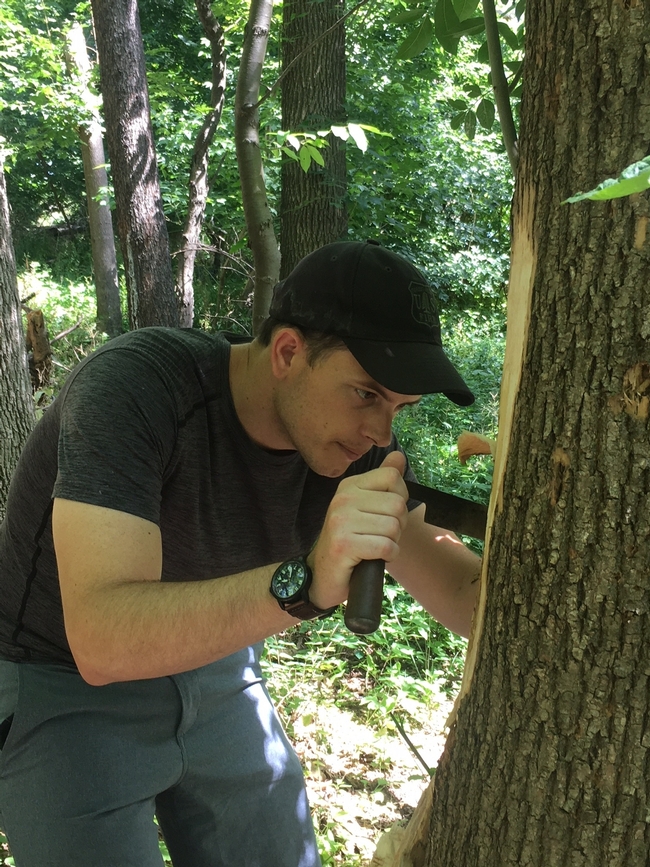
However, the burns are unprecedented in California's modern, highly populated times.
“I don't think that we can have another season like this without something fundamentally shifting,” he said “This is another indication of how we need to think differently about how we approach managing fire, and how we need to become more of a fire-adapted civilization."
It may be "a tough pill to swallow," but Jones told Romero that smoky skies could become a year-long reality because of prescribed burns in cooler months and a prolonged wildfire season in the warmer months.
“People are exhausted,” Jones said, “they're scared and don't understand this fundamental shift and change.”
Jones says the current fire season should also force people to rethink where communities should be built.
